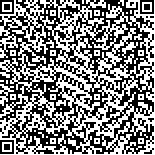许惊飞,郭铁成.重复经颅磁刺激对神经病理性疼痛大鼠脊髓内星形胶质细胞的抑制作用[J].中华物理医学与康复杂志,2016,38(9):659-663
扫码阅读全文

|
| 重复经颅磁刺激对神经病理性疼痛大鼠脊髓内星形胶质细胞的抑制作用 |
|
| |
| DOI: |
| 中文关键词: 神经病理性疼痛 重复经颅磁刺激 星形胶质细胞 胶质酸性纤维蛋白 热痛觉 |
| 英文关键词: Neuropathic pain Transcranial magnetic stimulation Astrocytes Glial fibrillary acidic protein Thermal pain |
| 基金项目: |
|
| 摘要点击次数: 2486 |
| 全文下载次数: 3640 |
| 中文摘要: |
| 目的观察低频和高频重复经颅磁刺激(rTMS)对大鼠神经病理性疼痛的疗效及其对大鼠脊髓内星形胶质细胞标志物胶质酸性纤维蛋白(GFAP)的影响,探讨rTMS治疗神经病理性疼痛的机制。 方法28只雄性SD大鼠,随机分为假手术组、假治疗组、低频rTMS组(1Hz)、高频rTMS组(20Hz),每组7只。假手术组仅暴露游离大鼠坐骨神经,不予结扎;其余3组经手术结扎坐骨神经制作神经病理性疼痛模型。术后第3天开始进行rTMS治疗,连续10d,刺激疼痛对侧大脑初级运动皮质。并于造模前、rTMS治疗前和治疗后测定疼痛行为学表现、机械痛觉和热痛觉,并于治疗结束后测定腰段脊髓内GFAP的表达。 结果造模后3d,假治疗组、低频rTMS组、高频rTMS组大鼠均出现明显的疼痛行为学表现,热痛潜伏时较假手术组均明显降低(P<0.05)。rTMS治疗后,高频rTMS组热痛潜伏时较假治疗组升高(P<0.05),而低频rTMS组无明显变化。与假手术组比较,假治疗组和低频rTMS组损伤侧脊髓背角内GFAP阳性表达细胞数量和染色强度均明显增加(P<0.05)。与假治疗组比较,高频rTMS组脊髓背角GFAP的表达显著下调(P<0.05),而低频rTMS无此改变。高频rTMS组大鼠疼痛改善程度与脊髓背角中GFAP的表达呈负相关。 结论坐骨神经结扎导致的神经病理性疼痛伴有脊髓背角内星形胶质细胞增殖;高频rTMS可以通过抑制脊髓内星形胶质细胞的增殖和活性而缓解疼痛,低频rTMS则无明显效果。 |
| 英文摘要: |
| Objective To observe the effects of repeated low and high-frequency transcranial magnetic stimulation (rTMS) on neuropathic pain and the expression of specific activation markers of astrocytes and glial fibrillary acidic protein (GFAP) in the lumbar spinal cord. MethodsTwenty-eight male Sprague-Dawley rats were randomly divided into a sham-operated group, a sham-rTMS group, a 1 Hz group and a 20 Hz group, with 7 in each group. The rats in the sham-operated group had their sciatic nerve exposed without ligation, while the other groups underwent sciatic nerve ligation to induce neuropathic pain. Three days after the operation, rTMS was applied to the primary motor cortex (M1) contralateral to the pain once a day for 10 consecutive days. Pain-related behavior and thermal pain response were tested before the operation and before and after the course of rTMS therapy. The expression of GFAP in the lumbar spinal cord was examined. ResultsAll of the rats which underwent sciatic nerve ligation showed pain-related behavior and significantly decreasing thermal pain latency compared with the sham-operated group. After the rTMS therapy the thermal hyperalgia was significantly attenuated in the 20 Hz group but not in the 1 Hz group compared with the sham-rTMS group. The expression of GFAP in the dorsal horn of the lumbar spinal cord ipsilateral to the neuropathic pain was significantly increased in the sham-rTMS group and the 1 Hz group compared with the sham-operated group. Compared with the sham-rTMS group, GFAP levels were significantly lower in the 20 Hz group but not in the 1 Hz group. The pain relief in the 20 Hz group was negatively related to the expression of GFAP. ConclusionsNeuropathic pain induced by peripheral nerve injury is associated with increased activity and proliferation of astrocytes in the dorsal horns of the spinal cord. High-frequency rTMS can relieve neuropathic pain through inhibiting the activity and proliferation of astrocytes in the dorsal horns, but low-frequency rTMS has no clinically significant effect. |
|
查看全文
查看/发表评论 下载PDF阅读器 |
| 关闭 |